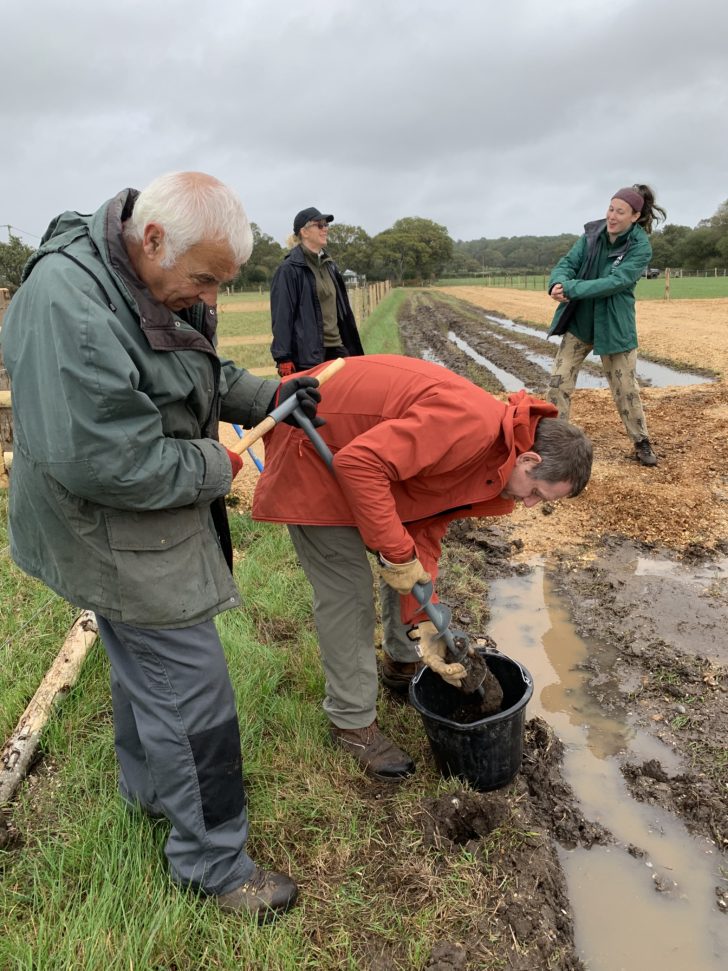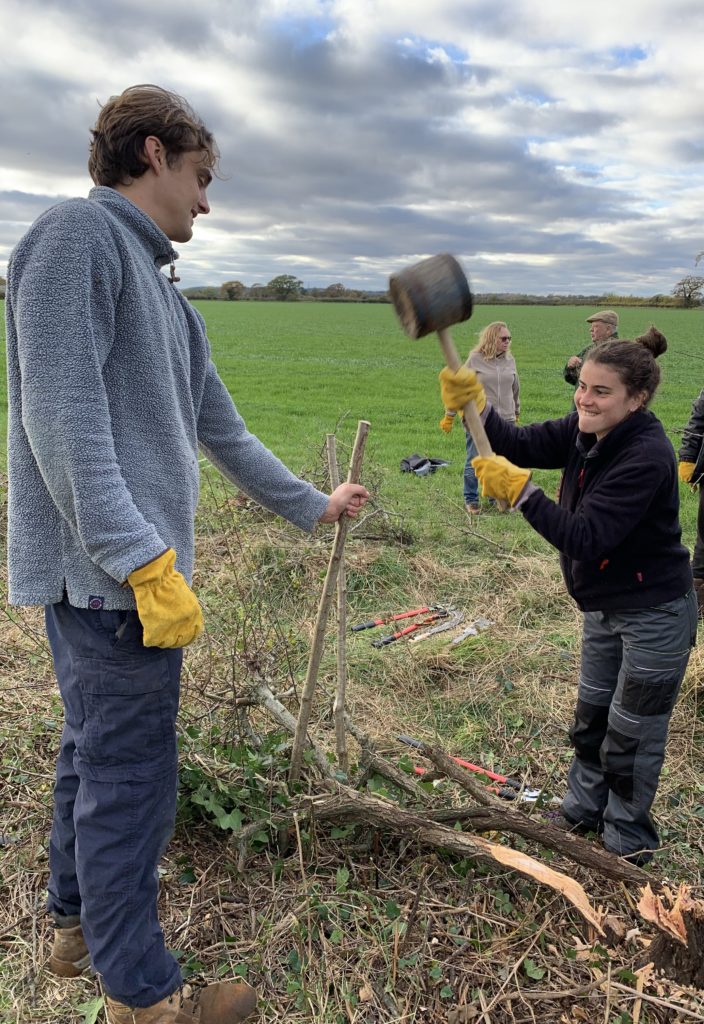Phase Two of Hedgerow Heroes: Soil Surveys and Hedgelaying

As we head through Autumn and into Winter, work on our Hedgerow Heroes initiative in the south west of the county has progressed well. The first phase, involving conducting wildlife surveys, to assess what animals, birds and invertebrates were present before we began the restoration work, has now been completed. The second phase has involved soil surveys and hedgelaying.
Soil surveys
Soil surveys have been undertaken by our Hedgerow Heroes volunteers under the supervision of the Ecology Team at the Hampshire & Isle of Wight Wildlife Trust. Samples were taken in the large field at Scotts’ Corner (see here for a reminder of what the site looks like), where hedges were ripped out many years ago. We have used old estate maps to identify where the hedges previously stood and our plans are to re-plant along these lines. While our volunteers were using the augurs, spiral tools to drill deep into the ground, it became evident that the soil in the areas of the field where there had been hedges before was much darker and richer than elsewhere. This demonstrated that, even many years later, hedges have a long term beneficial effect.

With test results back from the lab, we learned there were quite high levels of phosphorus in the soil. This is unsurprising since the field was farmed with arable crops for many years and would probably have had significant use of fertiliser in the past. When the soil surveys are repeated in the future, we expect the phosphorus levels to have gone down. We would also expect the soil under and alongside the new hedgerows to have generally higher organic matter readings. This should reflect a higher soil carbon content and clearly demonstrate the benefit of the hedge planting in the context of climate change mitigation. The new hedgerows will be storing carbon both above ground, in the branches and leaves, and below.
Hedgelaying (South of England style)
Another new activity for our volunteers was hedgelaying. This is a traditional country skill practised mainly in the UK and Ireland, with many regional variations in style and technique. It involves bending and partially cutting through the stems of a line of shrubs or small trees near ground level, and arching the stems without breaking them, so shoots can grow vertically and be intertwined. The aim is to regenerate new growth and thicken the hedge up, particularly near the ground, where many hedges are patchy or have gaps.
Our hedgelaying has been carried out under the supervision of local expert Chris Sparkes, otherwise known as “Hedgesparrow”, who has been laying hedges for many years all across the county, using the South of England style.
The first step in the process was to clear out all the brambles and ferns, to allow access to the hedge plants. This soon made clear that in some places there were more gaps than hedge! Once we got down to the hedgerow plants, mostly hawthorn, but also hazel, holly and even oak, our team were shown how to cut the stems with a billhook so that they could be bent over at 45 degrees. The cut itself is known as the “pleach” and it is from this that much of the new growth will be generated.
After the hedge plants have been laid diagonally, stakes are added to provide stability and lengths of fine hazel are intertwined at the top to bind the whole thing together. Once it is complete, it is a thing of great beauty. And, within a year, new shoots will be sprouting and the hedge will be much, much healthier. All the volunteers found the experience hard work, but very rewarding.
Report by Boyd McCleary, CPRE Hampshire, December 2021
Find out more about our Hedgerow Heroes initiative in the New Forest:





